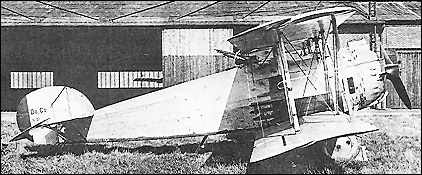|
| Evolved in parallel with the HD.5 and of generally similar
configuration, but larger and more powerful, the
HD.6 two-seat fighter was powered by a 530hp Salmson
18Z two-row radial water-cooled engine. This was
essentially two Salmson 9Z engines on a common
crankcase and flight testing was delayed by difficulties
with this experimental power plant, eventually commencing
in the spring of 1919. Armament consisted of
two synchronised 7.7mm Vickers guns for the pilot and
three 7.7mm Lewis guns for the gunner, two on a rotating
mount and one firing through a trap in the
fuselage floor. The pilot, seated beneath a cut-out in the
upper wing, was offered a singularly poor field of
vision. Performance did not show a significant improvement
over that of the more compact and simpler HD.3,
and development was discontinued by the late summer
of 1919.
 | A three-view drawing (800 x 549) |
| WEIGHTS |
| Take-off weight | 1250 kg | 2756 lb |
| Empty weight | 810 kg | 1786 lb |
| DIMENSIONS |
| Wingspan | 13.60 m | 45 ft 7 in |
| Length | 8.85 m | 29 ft 0 in |
| Height | 2.90 m | 10 ft 6 in |
| Wing area | 47.50 m2 | 511.29 sq ft |
| PERFORMANCE |
| Max. speed | 225 km/h | 140 mph |
| Range | 600 km | 373 miles |
| xiaoluo, 20.06.2011 06:18 Performance did not show a significant improvement over that of the more compact and simpler HD.3, and development was discontinued by the late summer of 1919. reply |
|
Do you have any comments?
|
| 
COMPANY
PROFILE
All the World's Rotorcraft
|







